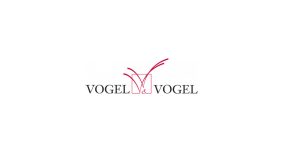On July 23, 2020, the French Competition Authority issued its new guidelines on merger control which supersede the former guidelines dated July 10, 2013. The new guidelines, which are applicable immediatelyand are more structured, incorporate the recent decision-making practice of the Competition Authority (inter alia, Altice, FNAC/Darty, or Emil Frey decisions), the major contributions of the European control authorities (see Austria Asphalt, Marine Harvest cases on the concept of merger), and the case law of the French Conseil d’État.
The guidelines reflect the Authority’s main areas of activity and are mainly supplemented on procedure (I) and the substantive review of a merger transaction (II).
I. Procedure
The new Guidelines first address the procedural constraints for undertakings submitting a proposed merger. In particular, the document develops the obligations of notification and suspension of the transaction, as well as their sanctions provided for in Article L. 430-8 (failure to notify, missing or inaccurate declaration, early completion of the transaction). The new guidelines thus establish the offence of gun jumping, of which the Altice 16-D-24 decision of November 8, 2016 was the first case study in France. The Guidelines take into consideration certain contributions sent in response to the public consultations launched by the Authority. Thus, in order to anticipate the notification of a merger, undertakings may now contact the Merger Department to send an (optional) request by e-mail for the appointment of a rapporteur, who will be responsible for examining the case, and which must contain certain information (now set out in point 189), including the contact details of the parties and their legal counsels and an accurate description of the transaction. Within five working days, the name of the deputy head of the merger control department responsible for examining the file is communicated to the notifying party. For greater legal certainty, the document now provides for a reply on the completeness (or incompleteness) of the notification file within 10 working days after notification (point 207), as well as a further period of 10 working days (point 244) to inform the notifying party whether the proposed merger can be dealt with under the simplified procedure.
After reminding that it is possible to pre-notify the transaction (points 191 to 200) – including in the event of a referral to the Commission – the document describes the procedure for submitting the notification file in paper form, as well as the new paperless notification procedure (points 234 to 238) open to mergers in the retail sector, provided that (i) they do not lead to a change of name, and (ii) they do not result in an overlap of activities, irrespective of their horizontal, vertical or conglomerate nature.
Reminding the various pieces of information that should be included in the notification file, the document states that its content may be simplified for undertakings that make a large number of notifications per year, such as investment funds or major players in the retail trade. As an unprecedented contribution, the new guidelines identify the transactions which, in principle, are not likely to harm competition and, as such, are eligible for the simplified procedure (point 230).
“The content of the notification file may also be simplified for the following transactions (…):
– when the combined market shares of the undertakings concerned is less than 25% on markets consistently defined by the decision-making practice,
– when there is an overlap of activity between the parties, where the combined market share of the undertakings concerned is less than 50% and the addition of market shares resulting from the transaction is less than 2 percentage points in markets consistently defined by decision-making practice,
– when present on vertically related markets, where the combined market share of the undertakings concerned on those markets is less than 30% in markets consistently defined by decision-making practice,
– when present on related markets, where the market shares of the undertakings concerned on the related markets are below 30% in markets consistently defined by decisional practice,
– in case of acquisitions of exclusive control of undertakings, where the acquirer exercised joint control of the target prior to the transaction,
– where the transaction relates to the creation of a full-function joint venture exclusively active outside the national territory,
– where the transaction relates to the acquisition of joint control of a real estate asset for sale before completion (vente en l’état futur d’achèvement (VEFA))”.
After describing phases I and II of the procedure, the guidelines reconsider the Minister of the Economy’s evocation authority by incorporating the Agripole decision of July 19, 2018, whereby the Minister authorized a merger that the Authority had previously subject to a divestiture condition.
The new document develops the remedies that may be adopted in the context of merger control (points 351 et seq.) – commitments made by the notifying party prior to or during Phase I (Art. L. 430-5, II, French Commercial Code) or Phase II (Art. L. 430-7, II); injunction for failure to give sufficient commitments or failure to comply with commitments (Art. L. 430-7, III) imposed by the Authority during Phase II only -, lists the remedies of a structural nature – including ‘fix-it-first’ commitments which the Authority has recently used on several occasions -, or of a behavioral nature (see recently Competition Authority, January 29, 2019, 19-DCC-15, and May 26, 2020, GBL, not yet published, and codifies the decision-making practice as regards monitoring (points 420 et seq.), review of remedies (points 442 et seq.) and non-compliance with commitments (points 456 et seq.). Appeals before the Conseil d’État are also extensively discussed in points 471 to 499.
II. Substantive review of a merger transaction
As regards the delineation of the product or service market (points 524 to 536) and the geographic market (points 536 to 551), the new document follows the method set out in the previous guidelines, i.e. the use of qualitative and quantitative criteria, which may sometimes be supplemented by the use of quantitative methods (points 552 to 562). On the other hand, the new guidelines have been revised, irrespective of the horizontal, vertical or conglomerate nature of the transaction under review, in order to make it easier for undertakings to foresee the factors that the Authority may take into account when analyzing the effects of a merger. In order to assess the market power of the new entity, the Authority states that it refers to the features of the relevant markets, such as market shares and the degree of market concentration – already discussed in the previous Guidelines – but also to the features of the undertakings (points 574 to 583: their size and the extent of their activities in the relevant market; their activities in related markets; their cost structure and margin levels; their production capacity; their competitive behavior; their possible links with other undertakings in the market under review; their capacity for expansion/risk of decline), the features of the products or services concerned (points 584 to 588: their place in the production chain, their nature as a constraint on trade, their degree of differentiation, which can be assessed on the basis of diversion ratios), the features of the parties’ customers or suppliers (points 589 to 592: their number and degree of concentration; their ability to discipline the new entity; their sensitivity to price), the features of the market and how it operates (points 593 to 600: stability; degree of transparency; nature of the relationship between suppliers and customers; existence of current or past coordination), the sources of potential competition(points 601 to 613: barriers to entry related to regulation, protection of intellectual property, access to certain data, extent of the costs for entering the market or changing suppliers, existence of network effects, signature of long-term supply or distribution contracts, bearing in mind that the time aspect of market entry depends on the features of the sector concerned and the more or less rapid developments that may characterize it).
As in its previous guidelines, the Authority then makes an analysis by type of anti-competitive effects concerned – horizontal effects (points 614 to 667), including on two-sided markets or on a tender market; vertical effects (points 668 to 710); conglomerate effects; creation or strengthening of buyer power (points 731 to 736); coordinated effects in general (points 737 to 751), and more specifically in the context of vertical and conglomerate mergers (points 752 to 754), or in connection with the creation of full-function joint ventures (points 755 to 766) – indicating in each case the nature of these effects and the criteria used to assess them.
Lastly, the guidelines include new appendices relating to the local analysis of the effects of a merger in the retail trade sector (points 822 to 837), the consideration of competitive pressure exerted by online sales in the context of a merger in the retail distribution sector (points 838 to 841), requests for internal documents which the Authority may have to claim during an investigation (points 842 to 848), a model form for divestiture commitment (points 849 to 891) and a model form for trustee mandate (points 892 to 938) which are up to date with the Authority’s decision-making practice.

 MY ACCOUNT
MY ACCOUNT











